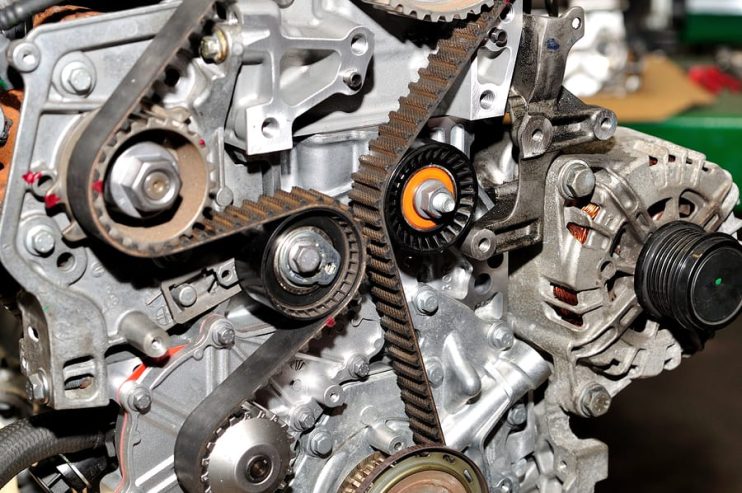
Replacing your cam belt is a vital part of your car’s maintenance schedule. Leave it to break, and you could cause untold damage to the rest of the car. If it fails, then the knock on effects can cause the engine’s pistons and valves to collide. Your car will break down, and it’s likely that the repair bill will be very hefty.
Yes, replacing the cam belt comes in at a significant cost. Which is why people might choose to ignore the warning signs. Remember however, that a written off engine is far more problematic.
What is the purpose of a cam belt?
Without getting too technical, the cam or timing belt helps rotate the engine’s cam and crankshaft, so the two rotating systems are in synchronisation – keeping the pistons firing at the regularly required intervals. You’ll find it under a timing cover on the front or side of the engine, and it’s often made out of a highly durable rubber and nylon material, usually with grooves to keep it in place. However, over time this material will degrade due to friction before finally breaking. Some cars have chains, and these will last longer than their rubber cousins, but will also eventually fail.
How often should you change your cam belt?
Most manufacturers will advise you to change your cam belt periodically – either every 4 to 5 years or 60K miles. As ever, a quick check in the owner’s manual for your car should give you the specific details. Keep to this schedule, and get your car serviced regularly to prevent damage to your engine – and by keeping one eye open for the symptoms on our list, you should be able to spot issues the moment they happen.
Signs your cam belt is failing
The following symptoms – especially when several occur at once, indicate that you should either inspect the belt yourself, or book a visit to your regular mechanic or service centre:
Noise coming from the engine – any kind of high pitched squealing, grinding, rattling, chirping, hissing or ticking can indicate that the belt is starting to slip from its position. If the noise gets worse in the wet, then this is a further indicator of problems. Be aware however that new belts also tend to squeal, which often means they need the tension adjusted – giving you a chance to inspect the belt for problems.
Difficulty starting the car – if the vehicle does not start at all, but you hear the starter motor engaging, then the chances are the cam belt is broken. As the car starts, look to see if the crankshaft turns, whilst the camshaft remains stationary on starting, to confirm the belt is broken.
Unusual revs – if the belt is loose, then slips will cause unusual revs between 2000 and 4000 rpm generating strange behaviour from the engine whilst out on the road.
Engine misfiring – as a worn out cam belt can play havoc with the engine’s firing sequence. Slips will cause cylinders to open and close too early or too late. Such problems can cause the engine to blow apart if left unchecked.
Oil leaks – check in your favourite parking positions for patches of oil. If the cam belt is damaged, then this will result in oil leaking from the timing belt cover.
Decline in oil pressure – if the timing of the cam belt is not right, it can skip causing fragments to break off the camshaft. These pieces sometimes fall into the oil pan generating a dramatic drop in pressure. If this happens, it could mean a complete engine rebuild.
Vibrations and excessive heat – as problems with the belt will impact the internal tensioner components, which in turn affects the overall performance of the engine.
Increased exhaust fumes – if cam belt is failing, then the engine will need to work harder to get the same acceleration, causing greater volumes of exhaust gasses than usual.
Rough idling of the engine – stuttering and spluttering coming from the engine when you’re idling, could be due to the loss of the grip teeth from your cam belt – causing it to slip away from the wheel. Detached teeth can even cause a severe jolt in the engine, should they fall into the gears.
Visual issues with the belt – perform a visual inspection of the belt. The following signs mean you should replace it:
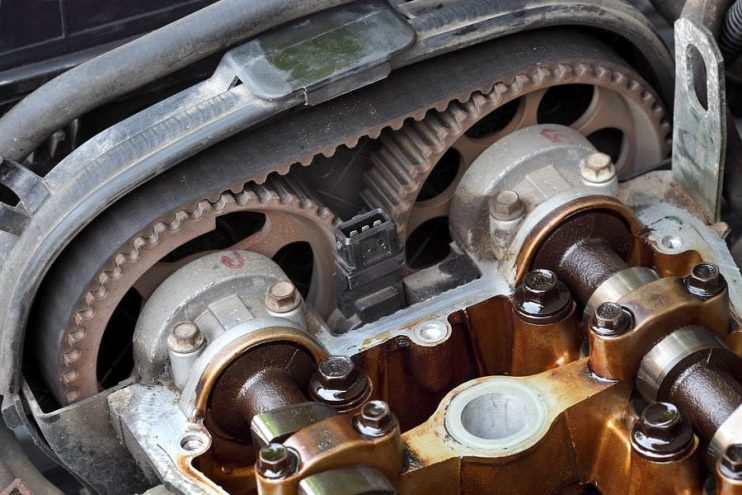
- Glazing – when the underside of the cam belt becomes shiny, it indicates that the rubber has hardened and lost flexibility.
- Cracking along the belt – any signs of cracks or frays mean you need to look at an immediate replacement. Check the belt by pressing the end of your nail into the rubber – and if it leaves no mark then the rubber lacks the required flexibility.
- Lost teeth – look for lost teeth on the belt, which may also appear on the ground underneath the engine.
- Engine failure – the ultimate worst case scenario. If your car stops running be sure to call up a mechanic or tow company and get your vehicle’s engine fully inspected.
- Broken pistons and valves – a completely broken belt means that the camshaft and the crankshaft will become desynchronised, resulting in the pistons coming into contact with the valves as they open, damaging the valves and pistons. If you know the belt is gone – then this is a very good reason for turning off the engine immediately.
Preventing Problems
Taking advantage of regular maintenance and service schedules might cost a little more – but it’s smart money if it prevents cam belt failure. If your mechanic indicates that there’s problems, then follow their advice – it’s better in the long run.
And if the belt breaks Stop the car. It’s a bad sign that could lead to further damage. The sooner you turn the engine off the less chance that you’ll need a truly expensive engine rebuild or replacement.

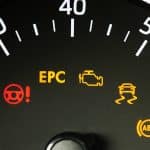

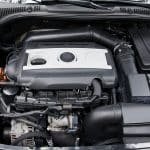



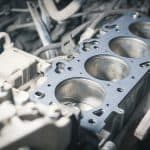
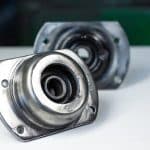

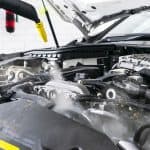
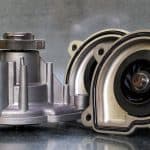
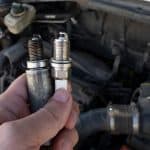
.png)